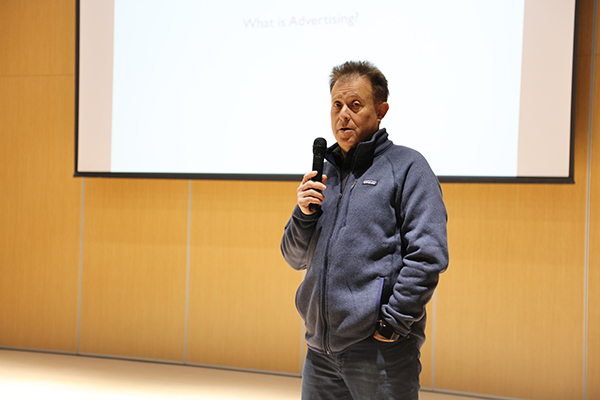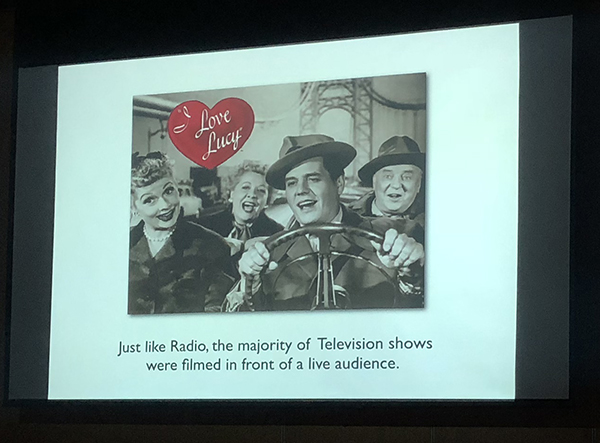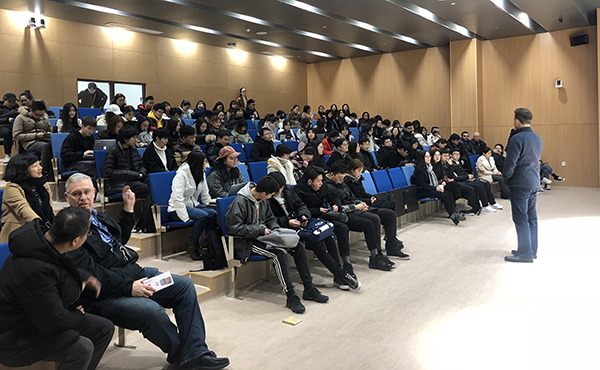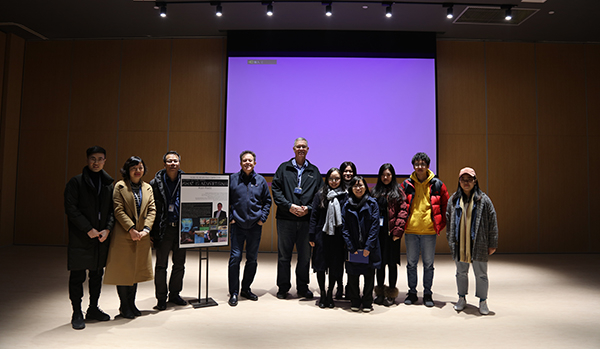Global Lecture Series | What is Advertising – Alan Rado
On February 6, Mr. Alan Rado—the owner and creative director of Adrado and adjunct faculty from Graphic Design Department at the College of DuPage—was invited by the Office of Research and Sponsored Programs at WKU and delivered an excellent speech about advertising for about 200 people at Semir Lecture Hall of Business school.
Mr. Alan Rado
This fantastic lecture started with a vivid introduction to the history of advertisements. Noticeably, Mr. Rado played many advertisement videos to elaborate his ideas during the whole lecture, which made the audience thoroughly impressed by the glamour of advertising.

When defining advertising, Mr. Alan Rado said: “advertising has always been about a specific message constructed to inform, persuade, promote, and motivate people on behalf of building the Brand”. To stress the significance of the brand building, he gave examples like the classic advertisement of Alka Seltzers’ “Spicy Meatball”, Soomthe E and the best-selling cookie OREO—which even put its brand on every cookie.
Mr. Alan Rado pointed out the two crucial elements of brands are “logo” and “slogan”. He suggested three steps to build a brand: “strategic thinking”—thinking about the brand awareness, target audience, and the “promise” (the unique part of the brand), “selecting media”—television, magazines, newspapers, radio and Internet; and “creative direction”—including “attitudes, appeals, and executional frameworks”.

He emphasized the change from traditional media to digital media (like Facebook, Twitter, and YouTube). As for the great influence of the Internet to the advertising industry, he took Google as an example: “In 2015, Google’s advertising revenue amounted to 67.39 million U.S. dollars,” he mentioned.
At the end of the speech, Mr. Alan Rado restated the importance of the purpose of advertising and said: “as advertising reinvents itself, advertisers and agencies will discover new media and develop new techniques. But the purpose of advertising will always remain the same—to inform and persuade”.





